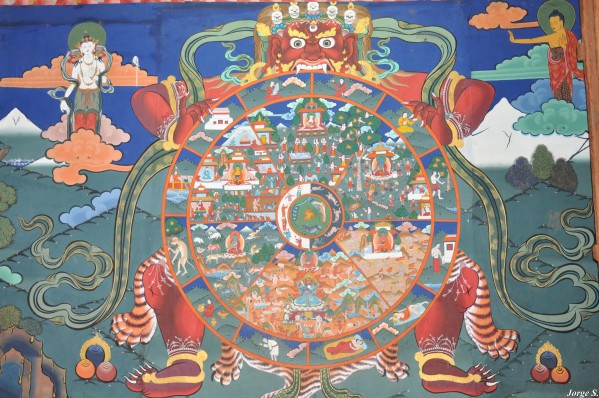Bhutan: ideologically and technically inspiring

In 1972, following its 4th king Jigme Singye Wangchuck, Bhutan chose happiness of the population as a goal for its public policies. It named it “Gross National Happiness” (GNH).
GNH was chosen over GDP on the realization that the distance is great between GDP and happiness since it must follow the causal chain of GDP leading to Per Capita Income to Standard of Living to Quality of Life to Happiness. That chain shows imperfect causality from one link to the next: Bhutan chose to, then, directly aim for GNH.
What is little known about Bhutan is the diligence of its institutions to fully and technically implement that GNH vision into actionable public policy actions.
The policy architecture follows a full-blown pyramid originating in the constitution of July 18th, 2008. Its preamble says: “We the people of Bhutan solemnly pledging ourselves to strengthen the sovereignty of Bhutan, to secure the blessings of liberty, to ensure justice and tranquility and to enhance the unity, happiness and well-being of the people for all time.” Then, article 9 (2) follows: “The state shall strive to promote those conditions that will enable the pursuit of Gross National Happiness.”
Flowing down from the Constitution, the GNH is then broken down into the 4 following pillars : Equitable and Sustainable Socio-Economic Development, Cultural Preservation and Promotion, Good Governance, Environmental Conservation.
Those 4 pillars are then outlined through 9 domains : 1. Living Standard, 2. Education, 3. Psychological Well-Being, 4. Health, 5. Time Use, 6. Cultural Diversity and Resilience, 7. Good Governance, 8. Community Vitality, 9. Ecological Diversity and Resilience
Last, those 9 domains are broken down into 72 indicators designed to objectively measure the progress made in the 9 specific domains.
Finally, to ensure that GNH is taken into account at each step of the policy making, an overall process has been designed: from those 72 indicators, a tool is designed to screen the policies in the making, as well as the actual implemented projects to deploy those policies. In the end, evaluative tools assess the actual impact on the GNH and allow to adjust the pillars, domains or indicators.
The GNH program has allowed for Bhutan to make a list of 23 identified drivers of Happiness.
Some try to look down upon Bhutan GNH policies based on its little known political regime. It is interesting to investigate and assess the democratic quality of its institutions. It is the king himself who self-decided in 2008 to drive the country towards a parliamentary monarchy. First democratic elections were made that year and 47 members of parliament elected by the people of Bhutan. Good governance being a pillar of their GNH program, they rank high on it: youngest democracy and achieved via a most peaceful transition, overall peace and stability (Unique Selling Proposition for touristic economic development), gender neutrality in the country, clean law enforcement system, transparent nation (most transparent Asian country based on Transparency International Corruption Index in 2010) and last media freedom (considered the fourth estate).
To summarize, Bhutan is proving its inspirational ability through
- A decent and further improving democratic process
- A inspired GNH goal
- A full policy making architecture and technical process
- A list of novel identified drivers of happiness






